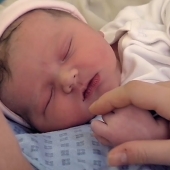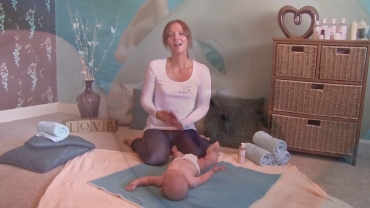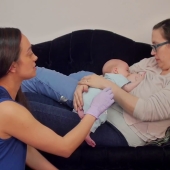In the first few days, babies can be quite sleepy. You may need to wake your baby to feed. When your baby is in a light sleep or is drowsy, holding him skin-to-skin or changing his diaper may help wake your baby enough to feed. If your baby is alert and wants to feed, don’t worry about changing his diaper until after the feeding. Take advantage of your baby’s readiness to feed.
Cues that your baby is ready to feed include: bringing his hands to his mouth, rooting or moving his head as if looking for the nipple, opening his mouth, licking his lips, and sucking.
Crying is often a late feeding cue. Babies feed best if they start before they become frantic and begin crying. If your baby is crying, you may need to calm him before trying to feed.
It’s important to feed your baby 8 or more times in a 24 hour period during the first week and offer both breasts at each feeding to help you make milk and meet your baby’s needs.
Watch your baby for feeding cues and readiness to feed, not the clock. In some cases, it may be important to wake your baby to feed if your baby is small, was born early, is not interested in feeding, has gone a long time between feedings, or if it has been suggested to feed your baby more often. If your baby looks interested in feeding, offer your breast. It is difficult to over feed a breastfed baby.
- 91 views













